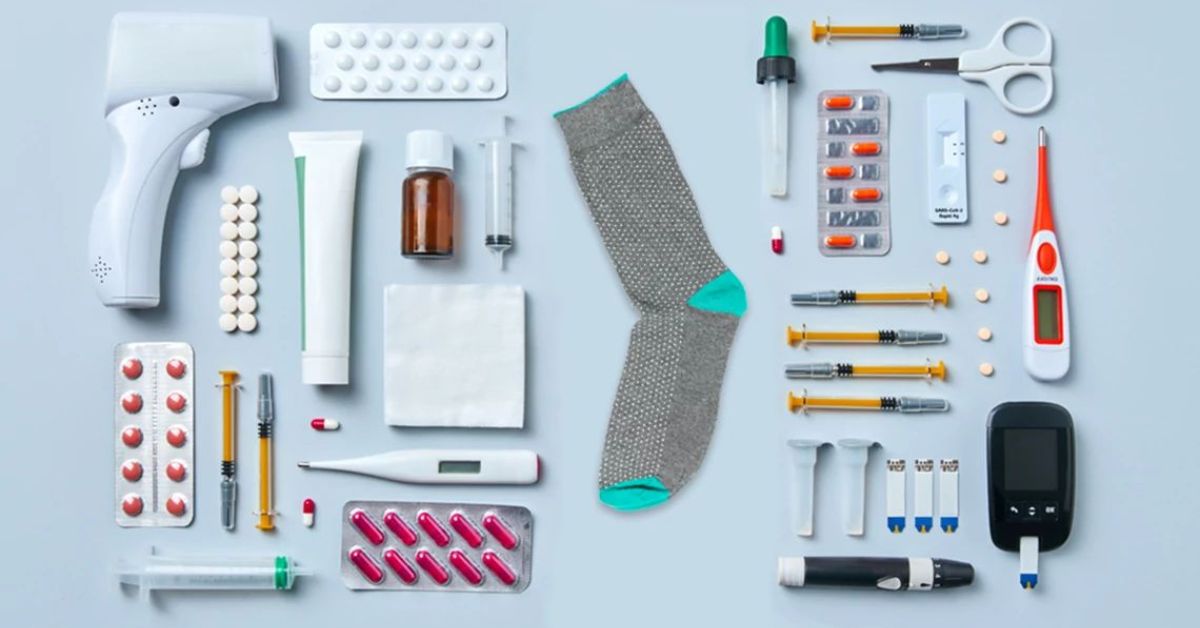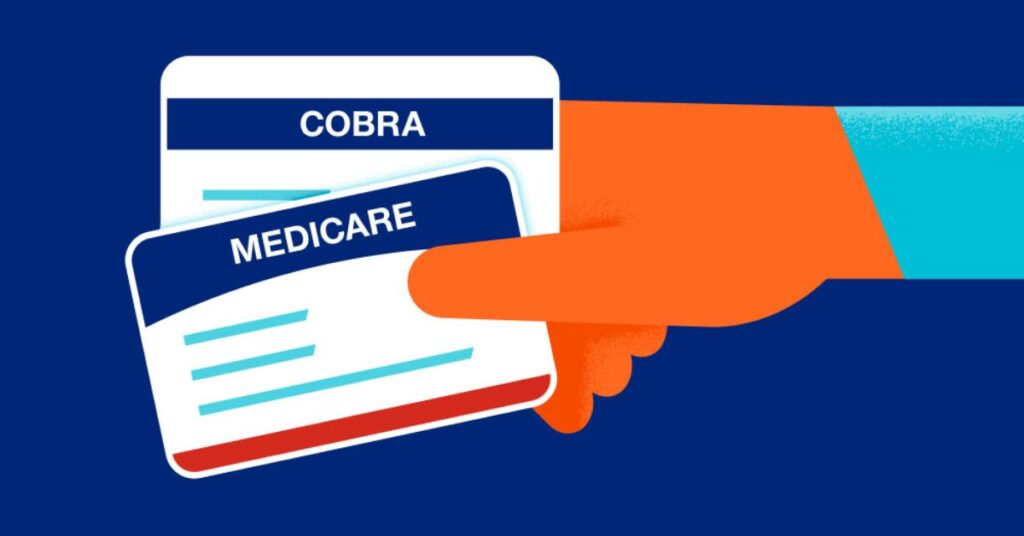If you or someone you care about has a medical condition that makes it hard to live at home, you’ve probably heard of “DME,” or Durable Medical Equipment. It sounds like bureaucratic talk, but for elders, it might mean the difference between being comfortable and having a hard time.
DME contains important things like wheelchairs, oxygen tanks, walkers, and hospital beds that help you move around, breathe easier, and sleep better—all in your own home. And the good news is? It might be covered by Medicare.
But here’s the thing: Medicare doesn’t always agree with what feels important. That’s where most folks get stuck. They think Medicare will take care of everything, but then they get surprise invoices or warnings from suppliers. This has happened to me more times than I can count.
This guide will show you everything, from what’s included and what’s not to how to purchase the equipment without paying too much or getting ripped off. Whether you’re doing research for yourself, your parents, or a client, I’ll show you the best way to go.
When you’re done with this, you’ll know exactly what to ask your doctor, how to talk to a Medicare provider, and how to avoid the traps that other people don’t see coming.
So let’s get started, because you shouldn’t have to deal with paperwork complications to feel at ease.
Who Actually Qualifies? Medicare’s Real Rules for DME Coverage
This is the bit that no one explains well: Medicare doesn’t just give you medical equipment because your doctor says you need it. You have to check off every box on a tight list, and if you miss even one, you’ll probably have to pay for it yourself.
So let’s get to the point—no fluff.
You need to have Medicare Part B first.
This seems apparent, yet it’s the first step. That isn’t enough if you only have Part A (hospital coverage). Part B, which covers medical requirements that don’t require a hospital stay, includes DME.
Your coverage may be a little different if you have a Medicare Advantage plan (Part C), but at the very least, they have to cover what Original Medicare does.
If you’re transitioning from COBRA to Medicare Part B, this guide on how COBRA and Medicare work together will help you understand what steps to take.
The equipment must also be medically required.
Not just easy. Doesn’t “make life easier.” What does “medically necessary” mean?
- You need a prescription from your doctor.
- It is necessary to treat a diagnosed disease.
- At home, you’ll use it.
- Medicare says it should last at least three years.
For instance: A walker for people with severe arthritis? Most of the time, yes. A reclining chair because it’s hard to get up from the couch? Most likely denied.
Third, it has to come from a supplier that is enrolled in Medicare.
Medicare won’t pay for a product even if it’s perfect for your condition unless the supplier is enrolled and agrees to “assignment” (Medicare’s price constraints). We’ll talk more about that in the supplier part later, but it’s a big problem that a lot of seniors don’t know about.
Also, make sure you’re enrolled in Medicare Part B during the right period — this seniors’ guide to Medicare enrollment deadlines breaks down key dates and penalties to avoid.
Sometimes you need to go see someone in person.
This one gets people confused. Medicare demands confirmation that you’ve seen a doctor in person recently (typically within six months of ordering the item) for some things, such motorized wheelchairs. Telehealth doesn’t always count.
Let’s make this a reality for a moment.
I once helped a family that thought their doctor’s note was enough to buy a $1,200 mobility scooter. They never had the needed in-person evaluation, and the supplier wasn’t signed up for Medicare. They paid for everything with their own money.
Don’t be that way. Follow the list.
Quick Recap List:
- You are a Medicare Part B member.
- Your doctor writes you a prescription.
- The item is for use at home and lasts more than three years.
- It comes from a supplier that Medicare has approved.
- You make a visit in person (if necessary)
What’s Actually Covered (And What Isn’t)
Now that you know who is eligible, let’s talk about what Medicare will really pay for and where people typically get confused.
Medicare has a rather rigorous definition of “durable medical equipment,” even if it sounds like a lot of things. The tools must:
- Be able to be used again and last a long time (lasts more than three years)
- Have a medicinal use
- Use it in your house
- Get a doctor’s prescription
That sounds easy, but here’s what you actually need to know: Medicare doesn’t cover everything that helps your health as “medical equipment.”
Items That Are Usually Covered (If Prescribed)
These are the things that Medicare normally pays for if they are medically necessary:
- Walkers, rollators, and manual wheelchairs
- Beds in hospitals
- Oxygen tools and extras
- Test strips and blood sugar monitors
- CPAP machines help people with sleep apnea.
- Chairs for the toilet
- Lifts for patients
- Pumps that suction
- Nebulizers and drugs
These are on the “standard DME” list. In most cases, you’re covered if your doctor can explain why and your illness meets the requirements.
What Medicare Doesn’t Pay For Most of the Time
This is where a lot of folks mess up. Unless you meet very precise exceptions, the following are usually always denied:
- Air conditioners or air cleaners
- Handrails and grab bars
- Bathtub lifts (unless there is a very good medical reason)
- Chairs for the shower
- Toilet seats that are higher up
- Lifts for stairs
- Bikes for exercise or gyms at home
- Adult diapers and pads for people who can’t control their bladder
Many of these things seem like medical necessity, especially for people who want to stay in their own homes as they get older. But Medicare generally classifies them as “comfort” or “home improvement” goods, not real medical necessities.
Grey Areas: Sometimes They Are Covered and Sometimes They Aren’t
Some tools fall within the gray area. For instance:
- You need to see someone in person and fill out a lot of paperwork if you want to get a power wheelchair or scooter.
- Your diagnosis will determine whether you need custom orthotics or braces.
- In rare cases, feeding pumps or other specialized nutritional devices may be covered.

Always check with your doctor and make sure the supplier is using the right HCPCS code. If you use the wrong code, your claim could be refused, even if your condition is real.
Why this is important: Many seniors spend weeks going back and forth with suppliers and Medicare, only to find out that the item they ordered was never eligible in the first place. This part helps you avoid the agony ahead of time.
How to Actually Get Your DME Approved (Step-by-Step)
The truth is that most people don’t get turned down because they weren’t qualified. They are turned down because they didn’t follow Medicare’s specified steps. It’s not hard, but if you omit a step or depend too much on the supplier to do it for you, you could make a mistake.
Let’s break it down the appropriate manner so you don’t lose time or money.
Step 1: Go to the doctor (in person if you need to).
You can’t just phone your doctor and ask for a note. Medicare needs proof of a face-to-face encounter, especially for expensive equipment like wheelchairs or oxygen systems. This visit should make it clear:
- Your health issue
- Why the DME is needed
- How it will be used around the house
You can ask your doctor directly, “Can you put all the language Medicare needs in the paperwork?”
Most service providers know what that entails, but you can still push them.
Step 2: Get a Prescription or Written Order
Once your doctor agrees, they need to make an official order for DME. This should have:
- Your name and diagnosis
- The kind of tools
- How long you’ll need it
- Any special features, like an electric lift, oxygen level, etc.
Suppliers can’t legitimately bill Medicare without this order.
Step 3: Pick a supplier that Medicare will pay for
This phase is what makes or destroys your claim. You need to choose a supplier that:
- Is a member of Medicare
- Accepts Medicare Assignment, which means they agree to Medicare’s prices.
If they don’t take assignment, you might have to pay 20% more on top of what they charge. And believe me, that may double your costs in a day.
Find one here. Before you place an order, check again. Give them a call. “Do you accept Medicare assignment for this equipment?”
Step 4: Let the Supplier Handle the Paperwork, but Stay Involved
Most of the time, once you provide the supplier your prescription, they will:
- Get in touch with your doctor for paperwork.
- Send the claim to Medicare
- Bring or send the equipment to your house.
But don’t just think it’s done. Call and ask for news.
A lot of claims are put on hold because the doctor’s office doesn’t have all the paperwork.
Step 5: Know How Much You’ll Pay Before You Get It
Most of the time, you pay for Original Medicare:
- 20% of the amount that Medicare agrees to pay
- Once you’ve paid your Part B deductible
That 20% might be entirely covered if you have a Medigap coverage. The cost of a Medicare Advantage plan will depend on the company that sells it to you.
Original Medicare also covers a wide range of preventive services — check this list to see what you might be missing: Are you using all your Medicare preventive services? Most seniors aren’t.
Before you sign anything, ask the supplier, “How much will it cost me out of pocket with Medicare?”
If they can’t provide you a clear response, look for an alternative source.
Why this is important: It takes time to get DME certified, but it’s not hard if you follow the guidelines. The main reasons for denials include not having the right paperwork or employing the wrong supplier. This step-by-step guide cuts through all the noise and puts you in charge of the process.
What Does DME Really Cost (Even with Medicare?)
Most individuals imagine that they won’t have to spend much after Medicare “covers” something. That’s not completely true. Medicare pays for some of it, but you are still responsible for the remainder unless you have supplemental coverage. And that extra expense can be a shock, depending on what kind of equipment it is.
So let’s make it plain.
The Basics of Math
If you have Original Medicare (Part B):
- Medicare pays 80% of the amount that was approved.
- You pay the last 20%.
- This starts when you pay your yearly Part B deductible, which is $240 in 2024.
For instance,
- Medicare pays $96 for a walker that costs $120, and you pay $24.
- If you need a hospital bed that costs $1,100, Medicare will pay $880 and you will owe $220.
If you have a Medigap (Supplement) plan, the 20% is often covered in full or in part. If you have a Medicare Advantage plan, your copay or coinsurance could be more or lower based on the restrictions of your insurance company.
Check your plan’s Summary of Benefits every time. Don’t make assumptions.
The Little-Known Difference Between Renting and Buying
A lot of seniors don’t know this: most DME is rented, not bought completely.
Medicare usually rents out expensive equipment for 13 months. You own it at the end if you keep using it. But you can terminate the rental if your health gets better and you don’t need it anymore. This will save you money.
Things that are commonly rented:
- Beds in hospitals
- Wheels
- Equipment for oxygen
- CPAP devices
Things that are usually bought:
- Canes and walkers
- Monitors for blood pressure
- Chairs for the toilet
Ask your provider ahead of time, “Will this be rented or bought?” And how much will I owe each month?
A lot of folks pay too much because no one told them.
Real-World Price Ranges (Based on 2024 SHIP & CMS Data)
| Equipment | Medicare-Approved Price Range | 20% Patient Share (Approx.) |
|---|---|---|
| Standard Walker | $90 – $120 | $18 – $24 |
| Manual Wheelchair | $300 – $500 | $60 – $100 |
| Hospital Bed (Basic) | $900 – $1,200 | $180 – $240 |
| Oxygen Concentrator | $200/month (rental) | $40/month |
| CPAP Machine | $800 – $1,000 | $160 – $200 |
Other Hidden Costs to Keep an Eye Out For
- Some suppliers sneak in delivery fees.
- Upgraded features, such as electric beds and luxurious cushions (not always covered)
- Costs for maintenance or repairs (only some parts are covered)
- Late paperwork fees (if the doctor or supplier takes too long to file the claim)
Why this part is important: Most seniors feel like they were lied to here. Medicare does help, but that doesn’t imply DME is “free.” You can save hundreds or even thousands of dollars by knowing the real statistics and asking the correct questions.
How to Choose the Right Supplier (And Avoid Costly Mistakes)
Let’s be honest: not all vendors are the same. Some are open and helpful. Some people merely want to grab your Medicare number as quickly as possible and sell you pricey upgrades. If you’re not diligent, you can get denied claims, surprise bills, or low-quality equipment that Medicare won’t replace for a long time.
This is how to stay safe and choose the correct source from the start.
Step 1: Make sure they are Medicare-approved and willing to take on the job.
This can’t be changed. Your provider needs to be:
- Signed up for Medicare
- Accepting Medicare Assignment implies they consent to the prices that Medicare sets.
If they don’t accept assignment, you’ll have to pay more than 20% because they can charge more than what Medicare pays.
Before you do anything, ask, “Are you a Medicare-enrolled supplier, and do you accept Medicare assignment for this item?”
If the response is no or they seem unsure, leave.
Step 2: Look at Their Reputation (Not Just Google Reviews)
Don’t only look at the stars. Check out:
- Complaints to the Better Business Bureau (BBB)
- Alerts from the state health department
- Reports of Medicare fraud (yep, they happen a lot)
Some common warning signs are:
- They make you feel like you have to order right now.
- Before they give you a medication, they ask for your Medicare number.
- They say they offer “free” upgrades, but Medicare normally doesn’t pay for upgrades without proof.
If you want to be extra careful, look up the supplier’s name on OIG Fraud Reports.
Step 3: Before You Commit, Ask Yourself These 5 Smart Questions
- “Will this be rented or bought?”
- “What will Medicare cost me out of pocket?”
- “Do you file the claim straight with Medicare?”
- “What will happen if Medicare denies the claim? Will I have to pay?”
- “What are your rules for repairs and returns?”
If they can’t answer with confidence, move on.
Step 4: Write Down Everything
Always ask for:
- A copy of the order in writing
- A list of the charges
- Any agreements for delivery or pickup
Why this is important: If a supplier adds services or equipment that you didn’t ask for and Medicare doesn’t pay for it, you could be accountable unless you signed something explicit. This is how individuals end up paying for things they never needed that cost a lot.
What If Medicare Denies Your DME Claim? (Don’t Panic—Appeal Smartly)
People don’t think this happens as often as it does. You did what you were told, your doctor sent in the paperwork, and the supplier said it was “all set,” yet you still got a denial letter.
The good news? A denial isn’t the end. Most of the time, it can be fixed. But only if you know how to act swiftly and accurately.
Step 1: Find out why you were denied
Read the Medicare Summary Notice (MSN) or refusal letter attentively first. Check for:
- The number of the claim
- The exact reason it was turned down (for example, “not enough documentation,” “not medically necessary,” or “supplier not approved”)
Knowing this helps you figure out what the problem was with:
- The notes from the doctor
- The supplier’s bill
- How Medicare sees your diagnosis
Don’t make a guess. You can also contact 1-800-MEDICARE and ask them to explain the denial in simple terms.
Step 2: Get in touch with the doctor and the supplier
Once you know what’s wrong or missing:
- Call your doctor: Find out if they sent in all the paperwork that Medicare needs.
- Call the provider: Check to see if they used the right codes on the bill and sent in all the right paperwork.
A single missing term, like “used daily in the home,” can often lead to a rejection. But it can be fixed.
Say, “Can you send me updated paperwork to back up my appeal?”
Step 3: File a Redetermination Appeal (within 120 days)
This is the first step in your appeal. You have to:
- Write a brief letter stating why the claim should be granted.
- Include any documentation that your doctor or supplier has fixed.
- Send a copy of the MSN or denial notice with it.
Send everything to the Medicare contractor whose name is on your notification.
Need a model? This is the official guide.
Keep a copy of everything.
Step 4: Think about asking for help
You’re not the only one who feels overwhelmed. That’s where SHIP counselors come in. They are qualified Medicare professionals in every state who help people like you with appeals.
You can find one here.
They won’t charge you, and they know how to talk to Medicare in a way that makes sense.
Lesser-Known DME Rights and Tips (That Can Save You Money and Stress)
You should know by now how to receive Durable Medical Equipment through Medicare. But most guides don’t tell you this: you have more rights and choices than most suppliers or even some doctors will tell you.
To keep safe, informed, and in charge, here’s what you need to know.
You Have the Right to Pick Your Supplier
Suppliers may act like they are the only choice, but they are not.
You can:
- Look for better service or cheaper charges out of your own pocket.
- Before agreeing to anything, ask for a detailed estimate.
- If you’re not happy, switch suppliers (for most types of equipment).
Tip: Some suppliers have superior customer service or more flexible rental terms. Just make sure they still take Medicare and accept assignments.
You can ask for an Advance Beneficiary Notice (ABN).
If a supplier thinks Medicare might not cover a given item, they have to provide you an Advance Beneficiary Notice (ABN). This is a written form that tells you:
- Medicare might not pay
- Why it might not be worth it
- What you’ll have to pay if it doesn’t
You might not have to pay if they didn’t offer you an ABN and Medicare later refuses the claim.
That’s a protection that most seniors don’t know about, and some vendors skip it on purpose.
You Can Fight Overcharges on Rent
If you’re renting equipment that you don’t need anymore, Medicare doesn’t have to keep paying, and neither do you.
You are able to:
- Get your doctor to write down that you don’t need the device anymore.
- Call the supplier and tell them to cease billing.
- Ask for a refund for costs made after the medical need date.
You should check your Medicare Summary Notice often to catch this.
You should tell people about bad suppliers.
You can tell the following people about a provider if you feel pushed, misled, or overpriced by them:
- 1-800-MEDICARE
- SHIP: State Health Insurance Assistance Program
- The Office of Inspector General is at oig.hhs.gov.
An audit can happen because of just one complaint, especially if other people are also complaining about the same company.
Final Thoughts: The DME Checklist Every Medicare User Should Follow
It isn’t as easy as “get a prescription and wait for delivery” to get durable medical equipment through Medicare. There is a process, but if you know how it works, you are much less likely to be denied, overpriced, or trapped with the wrong supplier.
I’ve explained everything to you: who may apply, how much it really costs, how to stay away from dodgy vendors, and what to do if you’re turned down.
Here’s a quick list to help you make sure you have everything you need:
Checklist for Durable Medical Equipment (for People Who Get Medicare)
Before You Place Your Order:
- Make sure your Medicare Part B is still active.
- Make an appointment to see the doctor in person, especially for complex DME.
- Ask the doctor to add the phrase that Medicare needs to see.
Paperwork:
- Get a formal order or prescription that has your name, diagnosis, how to use it, and how long to use it.
- If you need to, make sure your doctor writes “used in the home” on the prescription.
Picking a Supplier:
- Check medicare.gov to make sure they are approved and accept assignment.
- Enquire whether the item is rented or bought
- Ask for a detailed estimate of how much you will have to pay out of pocket.
- If you might not get coverage, get an ABN form.
After you order:
- Check in with the supplier and doctor to make sure all the documentation has been sent in.
- Keep copies of all orders, delivery receipts, and Medicare letters.
- Check your MSNs to make sure the billing is right.
- If your request is denied, you have 120 days to commence the appeals procedure.
Keep in mind that you are not at the mercy of the system. You are allowed to ask questions. You can fight back. You can definitely get the care and equipment you need without having to pay more than you should.
Your turn: Have you or someone you care about had trouble with Medicare DME claims before? What part of the process gave you trouble or benefited you the most? Tell us about your experience. It could really help someone else.
Want clearer answers on Medicare and medical costs?
Visit FameTribute.com for smart, no-fluff guides that actually help you make the right decisions—without the confusion.
Disclaimer: This article is for informational purposes only and does not provide medical, legal, or financial advice. Medicare policies may change, and individual coverage can vary. Always consult with a licensed healthcare provider, Medicare representative, or legal advisor for guidance specific to your situation. FameTribute.com is an independent resource and is not affiliated with Medicare, CMS, or any government agency.





Leave a Reply